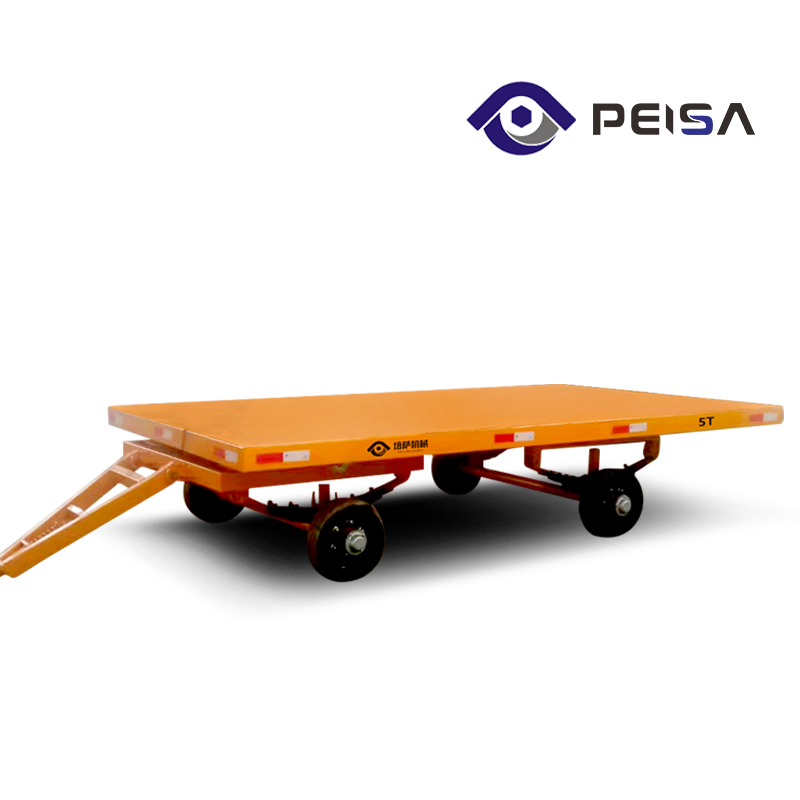
There are two types of Unpowered Trailers: one is the Unpowered Trailer on Rails, and the other is the Unpowered Trailer ...
There are two types of Unpowered Trailers: one is the Unpowered Trailer on Rails, and the other is the Unpowered Trailer on Wheels. Both serve as transport platforms for moving heavy materials and require towing by forklifts, tractors, or other mechanical equipment.
Heavy-duty Unpowered Trailers can be customized to suit specific needs.
1.Carrying Capacity: Ranges from 1 to 1000 tons.
2.Deck Size (Cargo Platform Size): Customizable based on the size and shape of the material being transported.
3.Additional Functions for the Workbench: Brackets, U-shaped grooves, rubber pads, etc., can be added for added functionality.
4.Wheel Type: Options include rail wheels, rubber wheels, and other types to suit operational needs.

Solid Rubber Tires: Designed to withstand higher loads and provide durability.
Number of Wheels: Typically 4-8 wheels, with larger Unpowered Trailers having more wheels to ensure higher carrying capacity and extend the trolley’s lifespan.
Heavy Steel Construction: Manufactured with high-quality steel in collaboration with well-known steel manufacturers, ensuring the trailer can last for over 20 years.
Dual Steering Mechanisms: Both the front and rear can be towed, providing flexibility in transportation.
Multiple Trailers Can Be Towed Together: Allows for efficient transportation of large volumes of materials by linking multiple Unpowered Trailers.